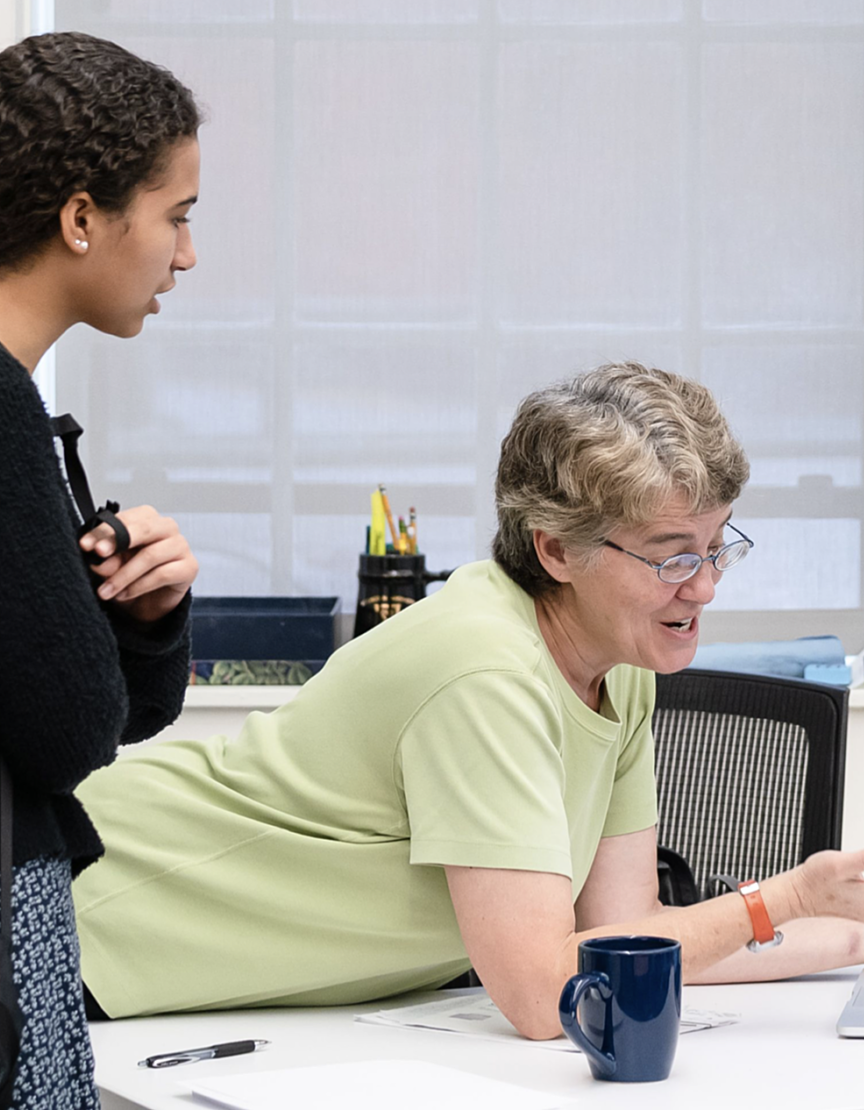
April 28, 2021
Reflections on Teaching with Big Data
Veteran teacher reflects on teaching and learning in the age of big data.by Ellen Greenberg
During my 25+ year teaching career, I have come to realize that the study of statistics is best taken with a dose of real data. The theories, formulas, distributions, and vocabulary come alive for students when applied to numbers that mean something in the real world. It has always been my goal to make learning relevant, to teach my students to be good consumers of information, and to have them see the power of statistical analysis applied to other disciplines. Students embrace this pedagogical approach and their desire to learn and go beyond the required elements is a victory for me. Celebrating these victories, paired with the idea that my students and I could learn together as we work with meaningful data, is why I was so compelled to join Andover colleagues in a Tang Institute project that reimagines the ways we teach in the age of big data.
As a Tang Institute Fellow during the 2020-21 academic year, I have been working alongside my colleagues teaching economics in the History and Social Science department. We have been fortunate to collaborate with Harvard University’s Opportunity Insights, an organization that harnesses the power of big data to explore real-world issues of economic and racial inequality. Opportunity Insights offers two open access tools that allow students the opportunity to work with large data sets that have real-world implications: the Opportunity Atlas, which links childhood zip codes to social and economic outcomes in adults, and the Economic Tracker, which focuses on the impact COVID-19 has on economic prospects in the US.
My class has been able to use both these tools for statistical analysis and student-driven exploration of themes of social justice. The rich, real-world data sets provided by Opportunity Insights allow our students to pursue answers to deep questions: “How does opportunity differ based on neighborhood and race in Atlanta? How are socioeconomic status and access to higher education related? What does the ‘American Dream’ look like to Millenials from different backgrounds?” My students, just like their peers in our economics class, navigate complex big data sets and do so in ways that consistently wow me.
During the winter term, my students and I study inference, and I ask students to create posters to submit to the Data Visualization Poster Competition sponsored by the American Statistical Association. Since I want students to have choice and spend their time studying something they care about, I suggest but do not require the use of OI data, and in February 2021 about half of my students took me up on it. As my conference periods began to fill up with students who were wrapping their heads around huge spreadsheets of variables such as college tiers, zip codes, and parental income, I became the student, for I am new to this, too. My students took the time to explain to me how they parsed the data for a particular analysis. They use raw data, often manipulating it further, to produce graphs to include on their poster. They take such care in working with these data sets, and spend huge amounts of time developing thoughtful interpretations of their findings. More victories to celebrate!
A sampling of student work
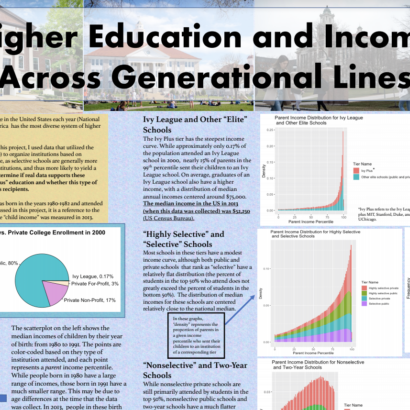
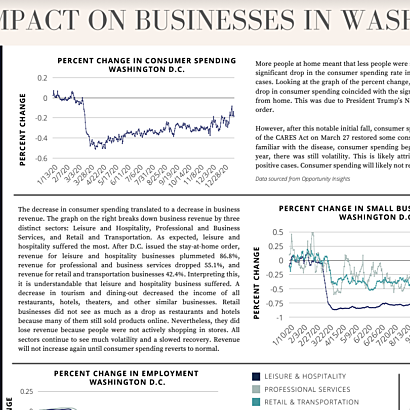
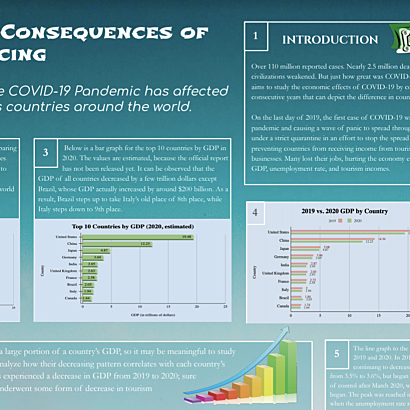
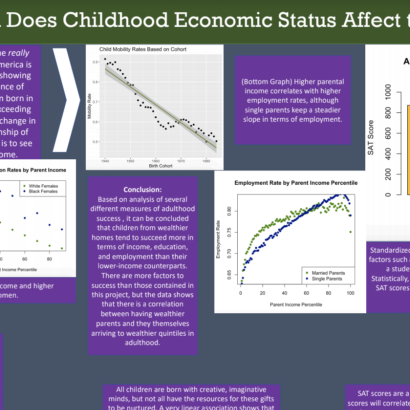
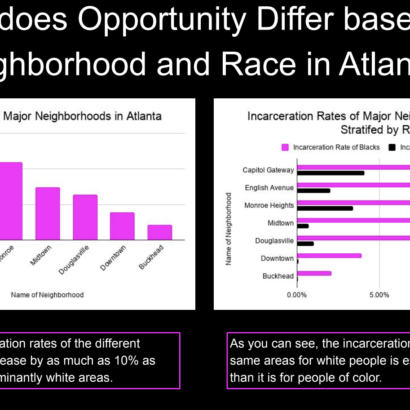
Simi C. ’22, one of my statistics students, had this to offer about her experience:
"While doing this project, there were certainly ups and downs. Pulling the correct data from the OI website proved to be difficult at times, but the most frustrating part was learning how to use R to code good graphs. Despite this, doing this project was very rewarding. Using actual datasets to curate my graphs made me feel very independent and not coddled, which can be rare on big projects such as this. I genuinely had fun doing the project. Learning about these disparities brought upon some self-reflection, and I was very passionate in displaying these in the best way possible."
I genuinely had fun doing the project. Learning about these disparities brought upon some self-reflection, and I was very passionate in displaying these in the best way possible.
”For all of us, the process of using these large data sets was a learning experience, one highly worth the time and effort. We will continue to explore and put to use the data available through Opportunity Insights. I’m grateful to be able to offer this type of learning experience to my students, and look forward to sharing updates and highlights with educators who are interested in integrating similar work in their classroom.
Ellen Greenberg is an instructor in mathematics, statistics, and computer science and a Tang Institute fellow with the Opportunity Insights project.





